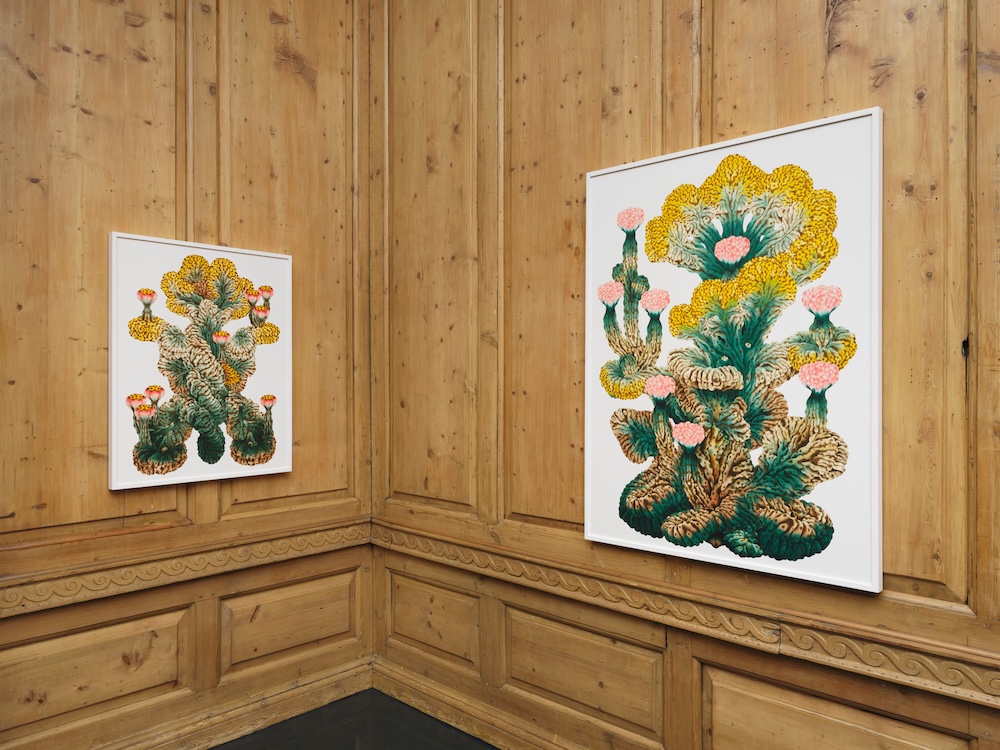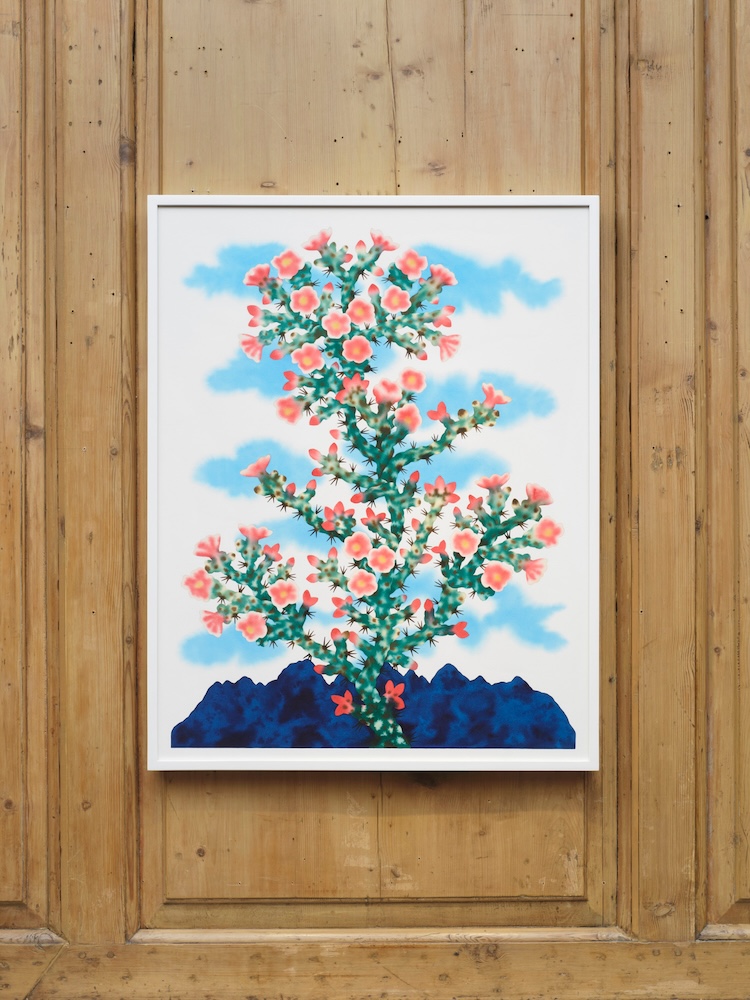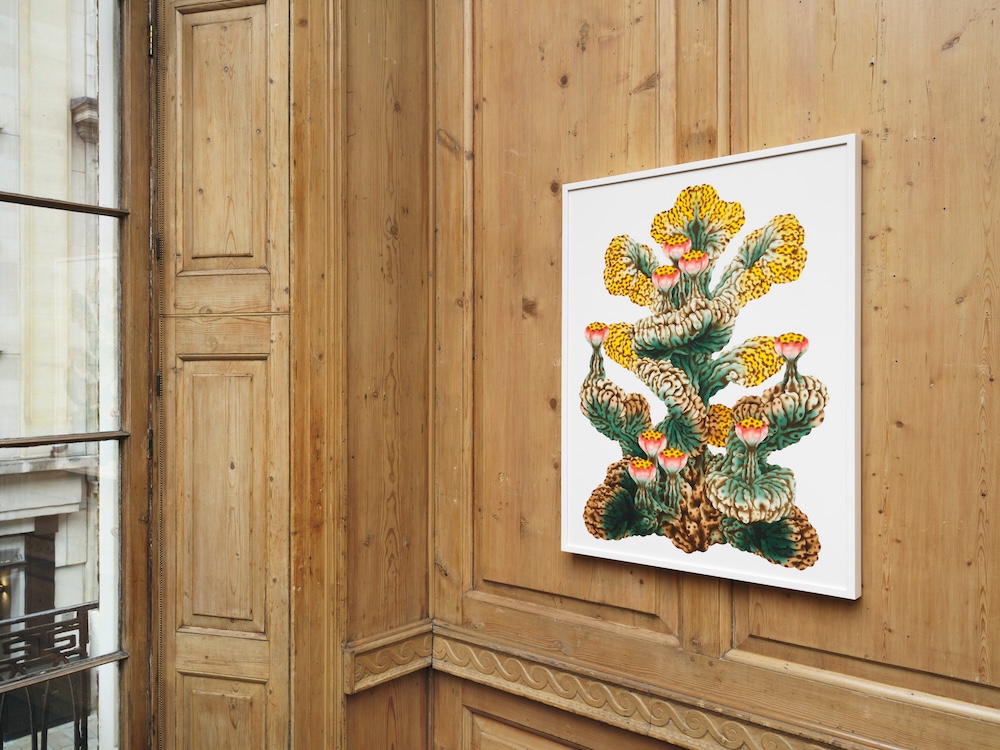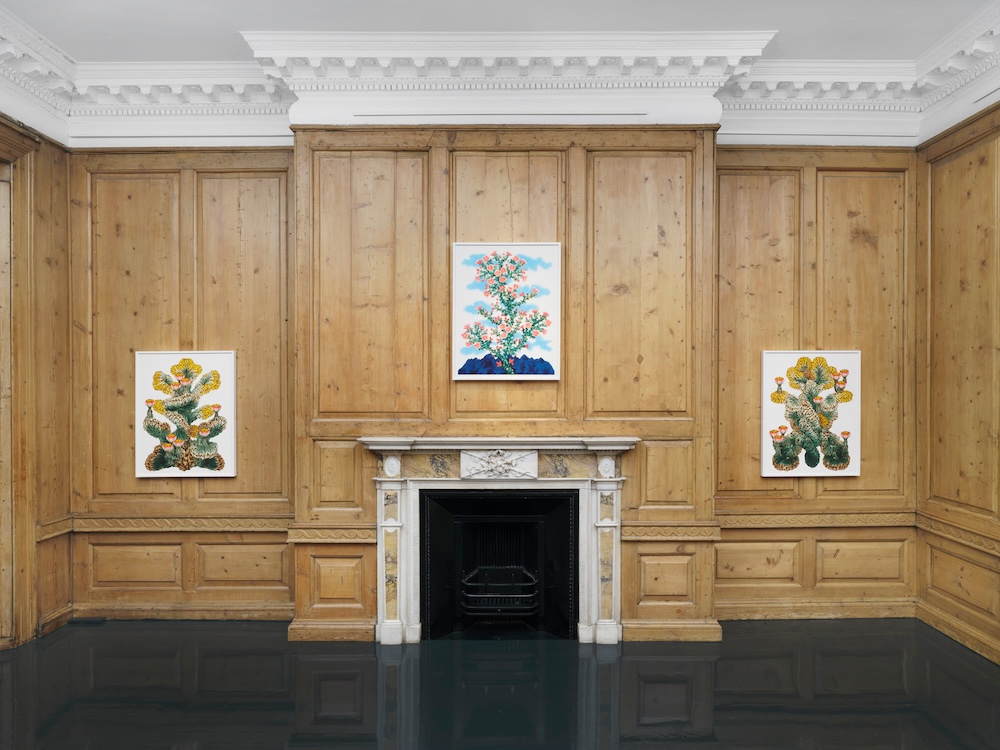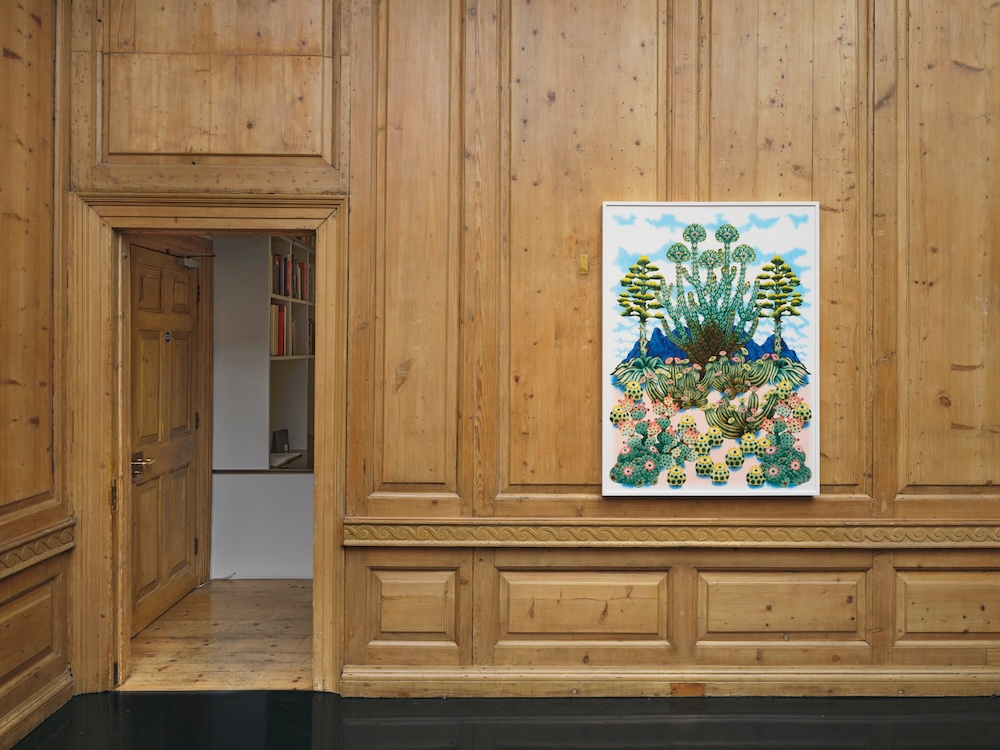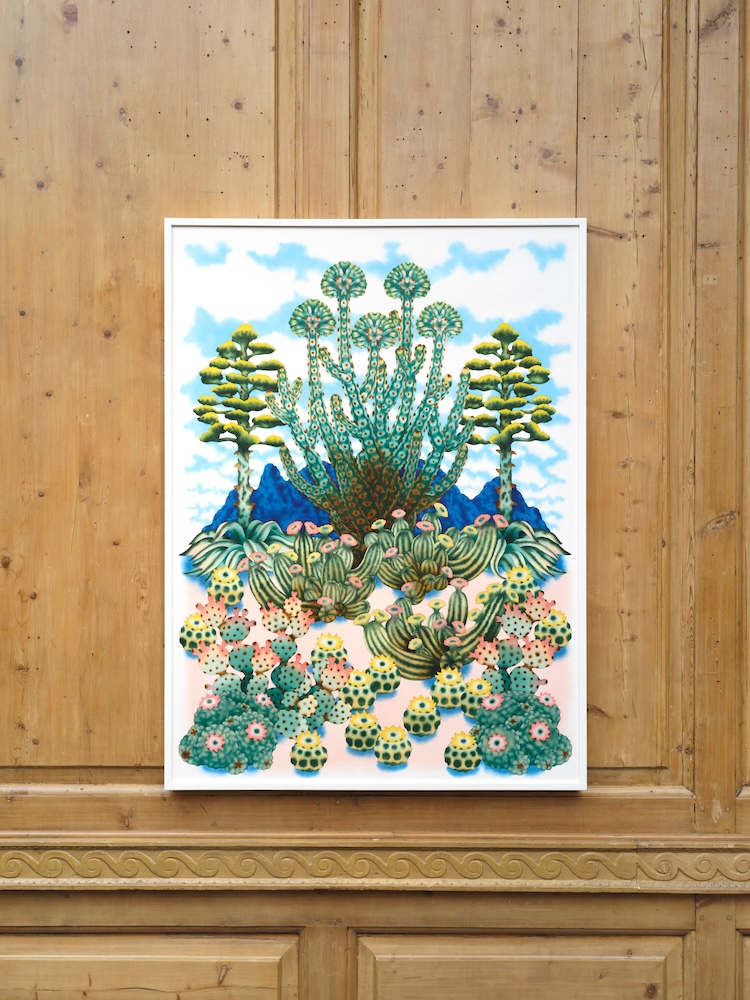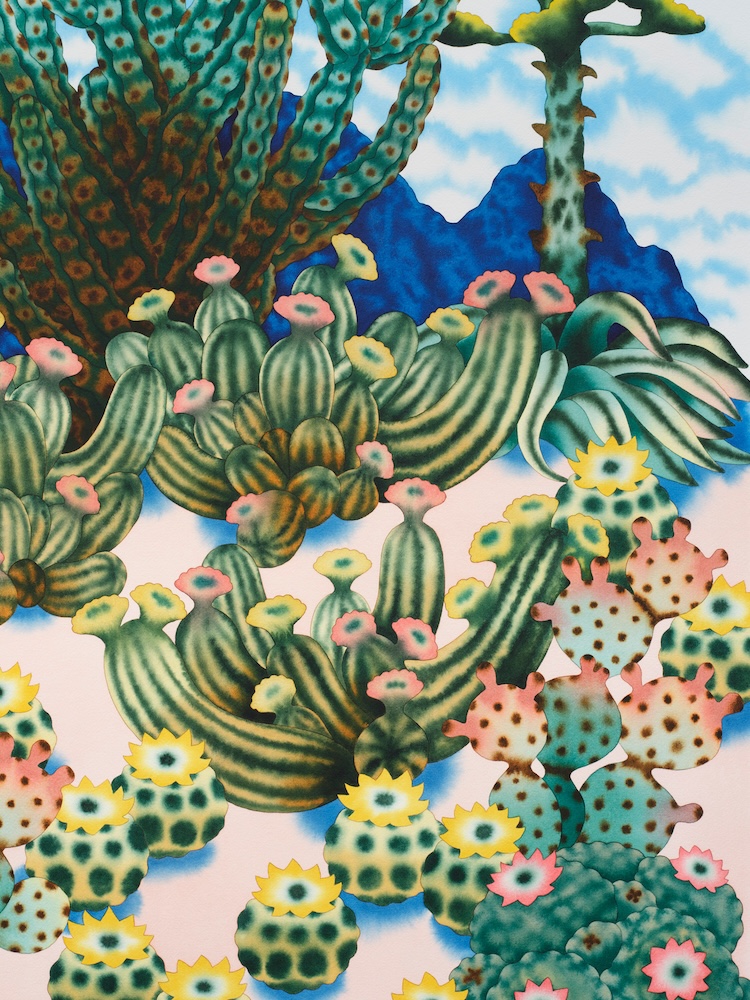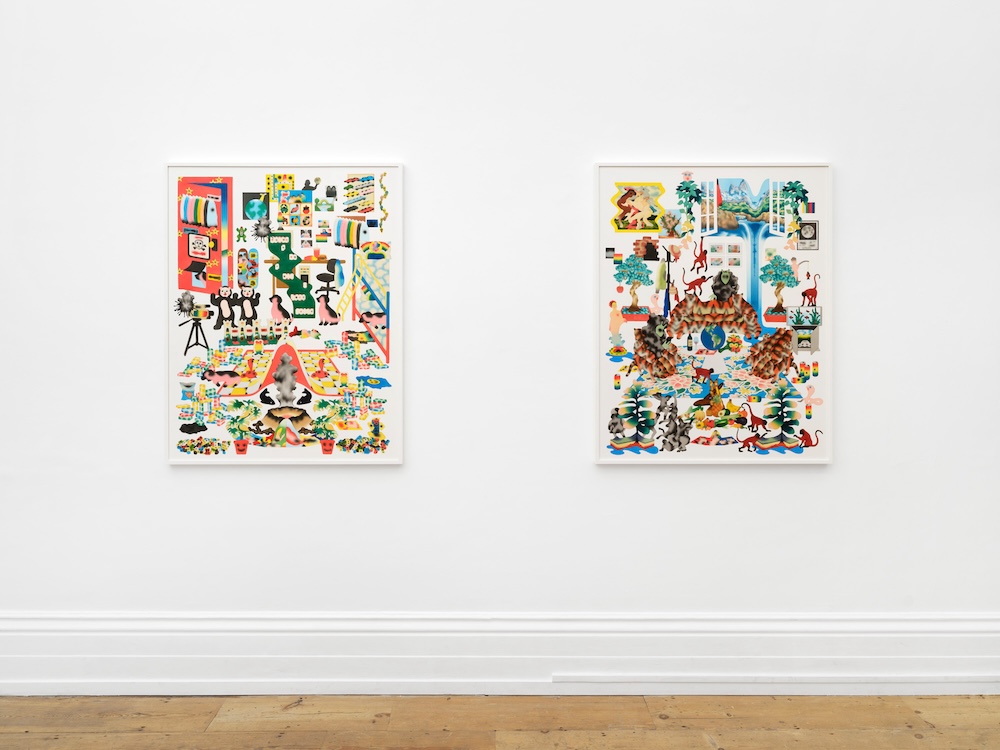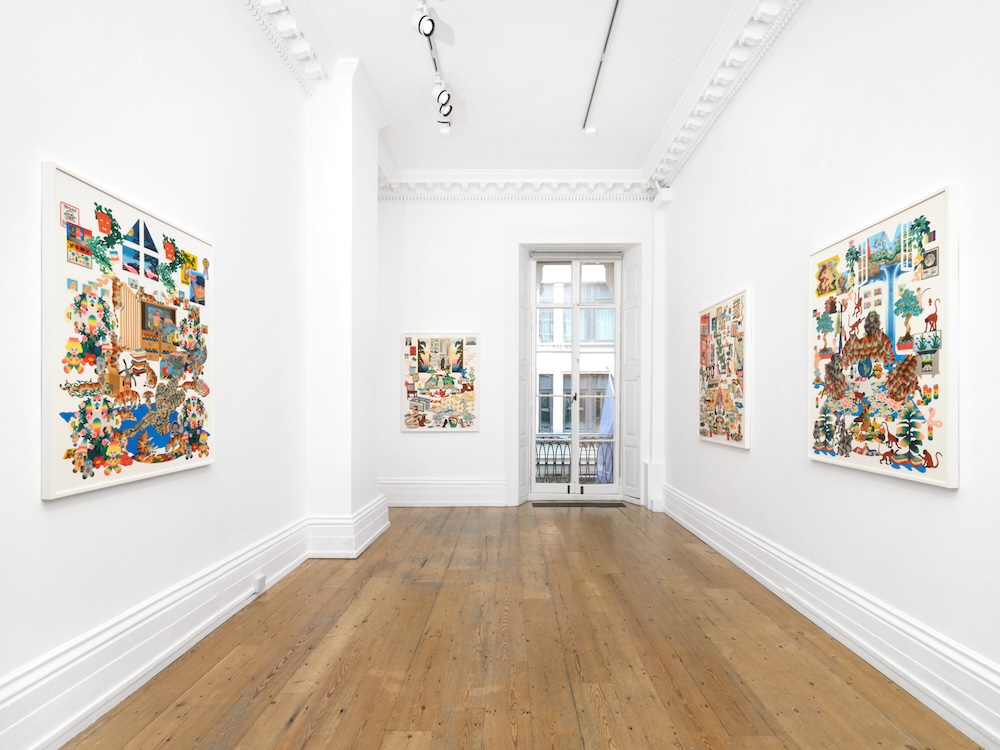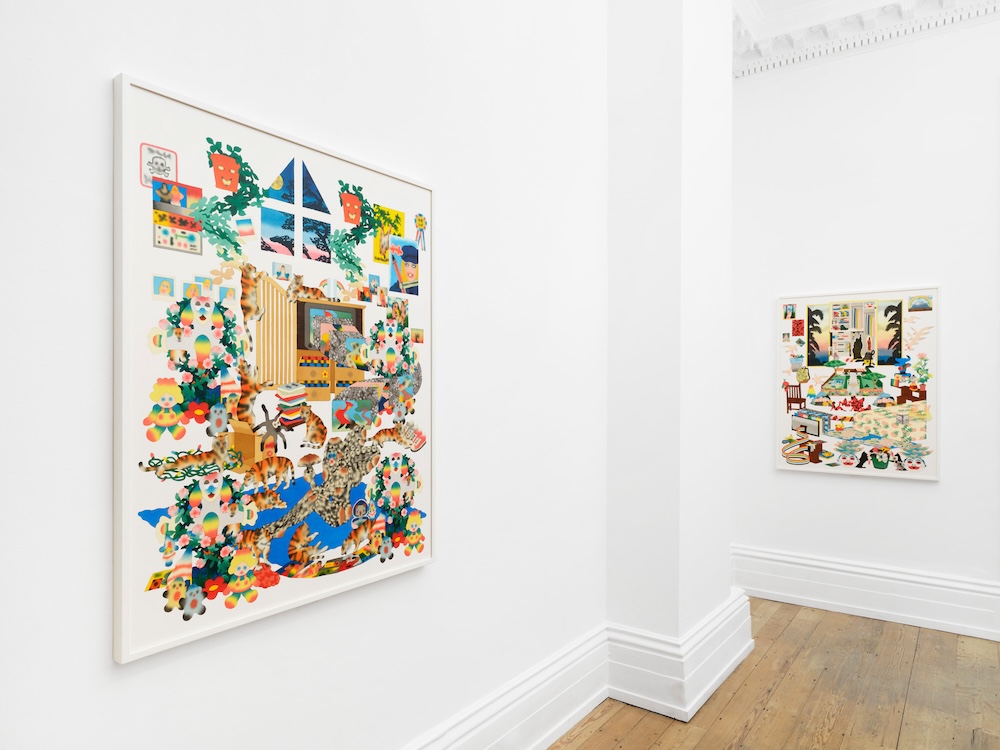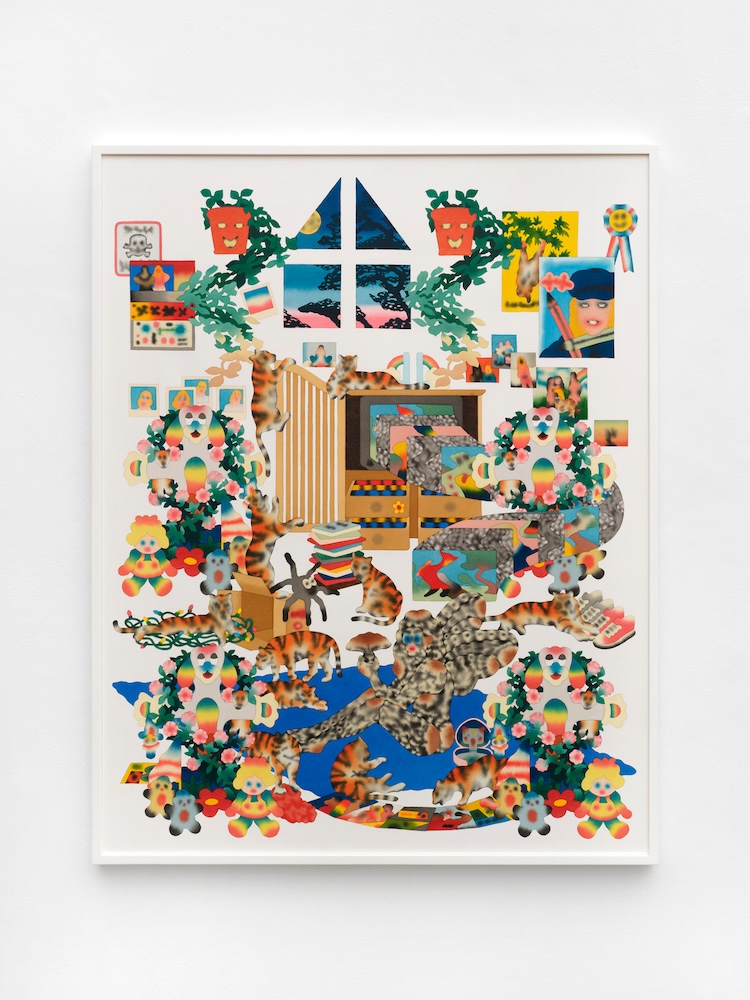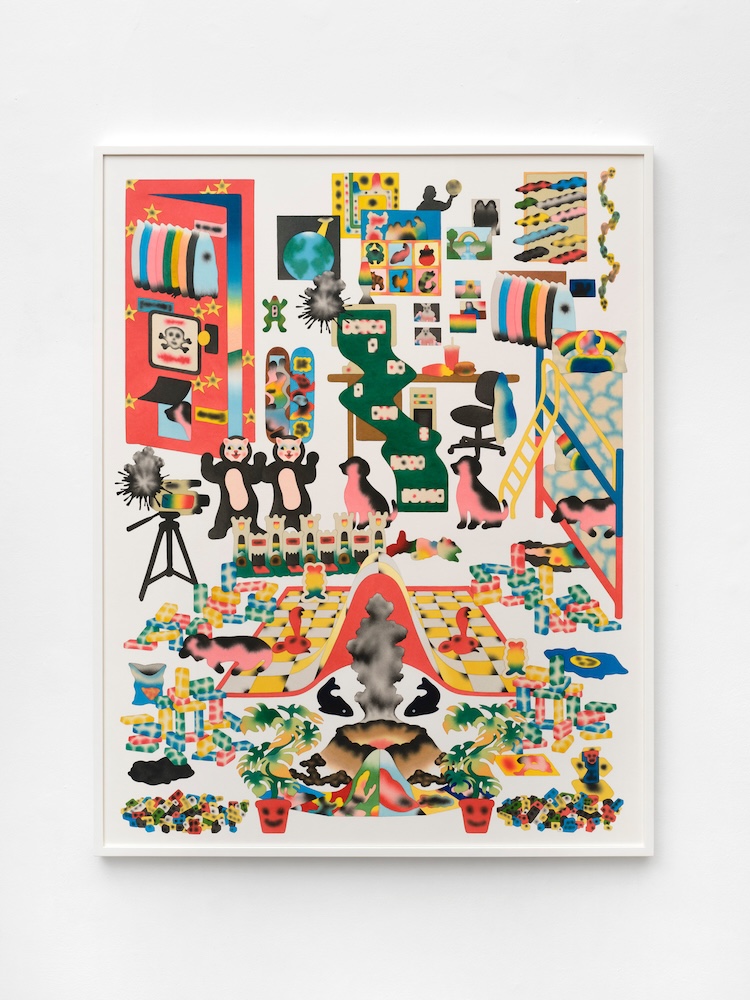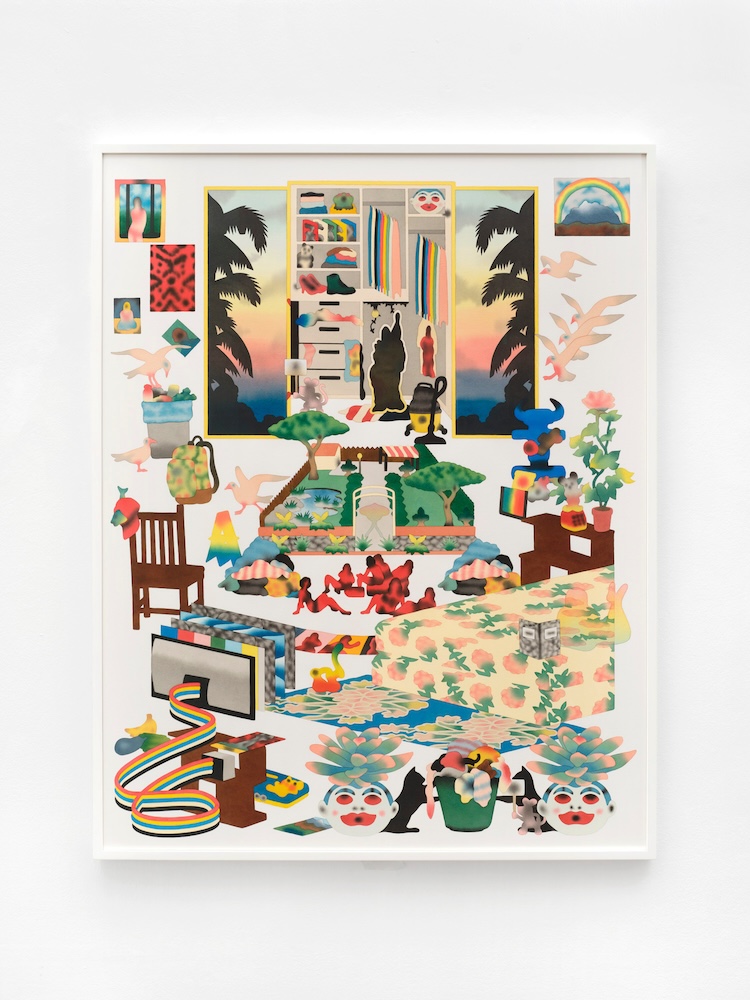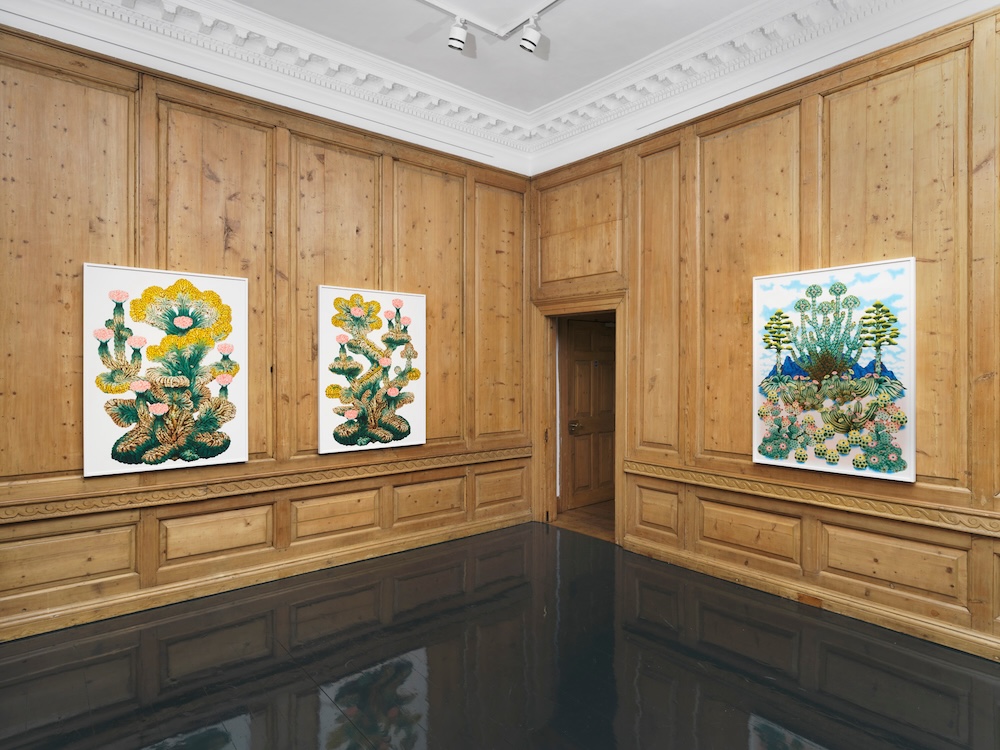Carl Kostyál is delighted to present Down from the Mountain, a collection of large-scale works on paper by Matthew Palladino. Executed in acrylic ink, the paintings showcase a medium akin to watercolor, which the artist has meticulously explored for over a decade. Divided into two distinct themes, the exhibition delves into the world of organic natural plant-based forms and intricate, dream-like interiors.
These natural forms, predominantly succulents and cacti, captured Palladino’s attention during the pandemic when outdoor access was limited to his terrace, nestled against the striking backdrop of the Andean mountains and dramatic high-altitude skies in La Paz, Bolivia. Born and raised in urban San Francisco, the natural world had not been a prominent subject in his work until his move to this desert city. Initially inspired by the succulent collection curated by his partner, the artist began with still life representations. As he delved deeper, these still lifes transformed into landscapes, which were subsequently reimagined in the digital realm to create compositions that juxtapose the natural with the mechanical, revelling in the bizarre forms found in succulents. Over time, the landscapes evolved into individual plant portraits, resembling ancient totemic icons. In the exhibition, two monumental crested plant paintings stand as focal points, stripped of extraneous settings, and radiate a quasi-religious aura, emphasizing Palladino’s quest to decode and re-create the mystery hidden within these botanical wonders.
The cluttered interior paintings, referred to as “Room” paintings, are also interwoven with the pandemic experience, as confinement led the artist to contemplate interior spaces and the multitude of objects that inhabit them. The inception of these works was influenced by recurring dreams set in labyrinthine buildings filled with surreal objects and characters from the artist’s past and present. Memories tied to these objects played a pivotal role in shaping the compositions. Over time, the room paintings transcended their literal interpretations, taking on a dream-like quality where objects morphed, repeated, and sometimes dissolved into abstraction while occasionally snapping back into focus.
The choice of water mediums on paper is a deliberate one, as it offers an absorbent and luxurious surface that, when combined with liquid mediums, provides a unique range of techniques and a level of precision seldom found in traditional painting.
The transparency of water mediums on paper imbues colors with an ethereal glow, as light reflects off the paper’s surface and shines through the transparent medium, creating a luminosity that is distinct and evocative. Palladino also relishes the constraints of the medium, it’s unforgiving nature, and the immediate permanence it demands. This creates a heightened state of awareness during the painting process, as each movement and application is time-sensitive and definitive, allowing him to be fully absorbed in the moment.
Palladino’s creative process unfolds in two distinct phases. The initial “sketching” phase transpires digitally, enabling the artist to experiment with compositions, make additions and subtractions, and play with different elements to explore countless variations. It is a phase of creative exploration where the artist indulges in the freedom of digital tools to refine the vision. The second part of the process, the physical execution, is akin to a performance. He does not rely on masking tapes or resists, choosing to hand-draw and paint every detail. Like a musician reading and playing music simultaneously, he immerses himself fully in the medium, executing each small moment with precision, timing, and expertise. The decision regarding subject matter and composition, refined during the digital phase, allows him to be entirely in the moment, focusing on the craft with an unwavering intensity that excludes all distractions.



